Long-duration X1.0 solar flare erupts from Region 3354
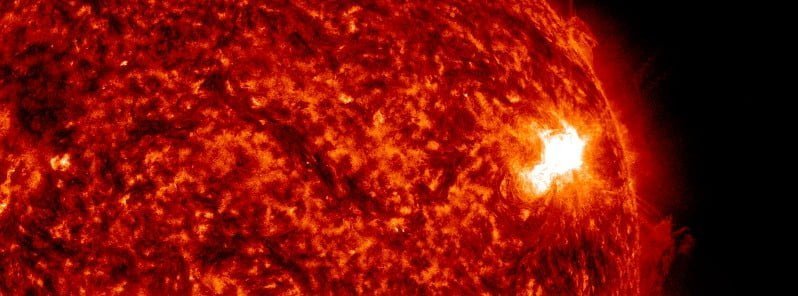
A long-duration X1.0 solar flare erupted from Active Region 3354 (beta-gamma-delta) at 23:14 UTC on July 2, 2023. The event started at 22:54 and ended at 23:58 UTC.
There were no radio emissions that would suggest a coronal mass ejection (CME) was produced.
However, a 5-minute long, 200 sfu 10cm Radio Burst (Tenflare) was associated with the event. A 10cm radio burst indicates that the electromagnetic burst associated with a solar flare at the 10cm wavelength was double or greater than the initial 10cm radio background. This can be indicative of significant radio noise in association with a solar flare. This noise is generally short-lived but can cause interference for sensitive receivers including radar, GPS, and satellite communications.
Radio frequencies were forecast to be most degraded over the western United States, western Canada, the Pacific Ocean, Japan, and eastern Russia at the time of the flare.
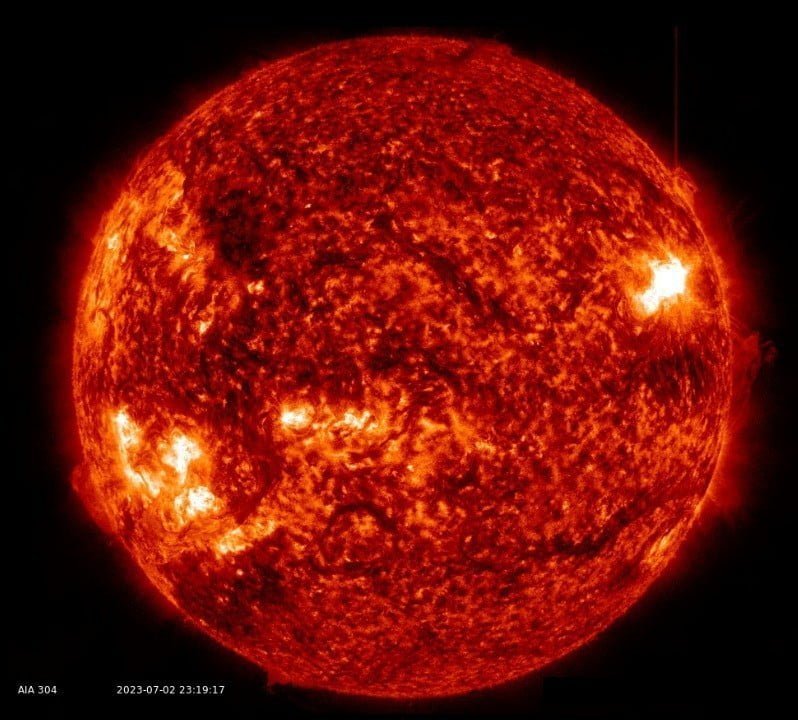
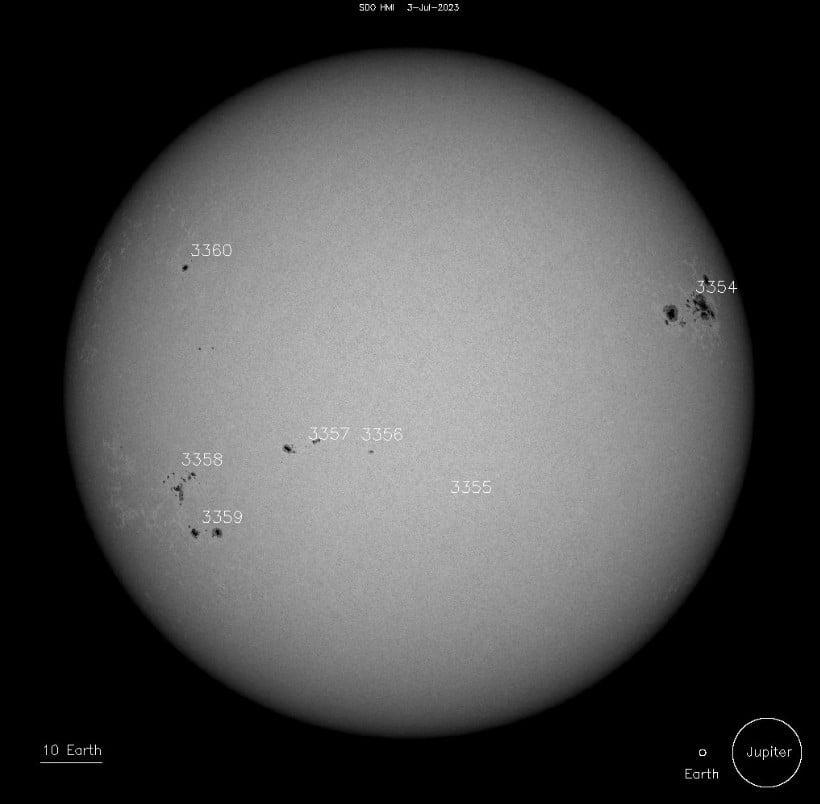
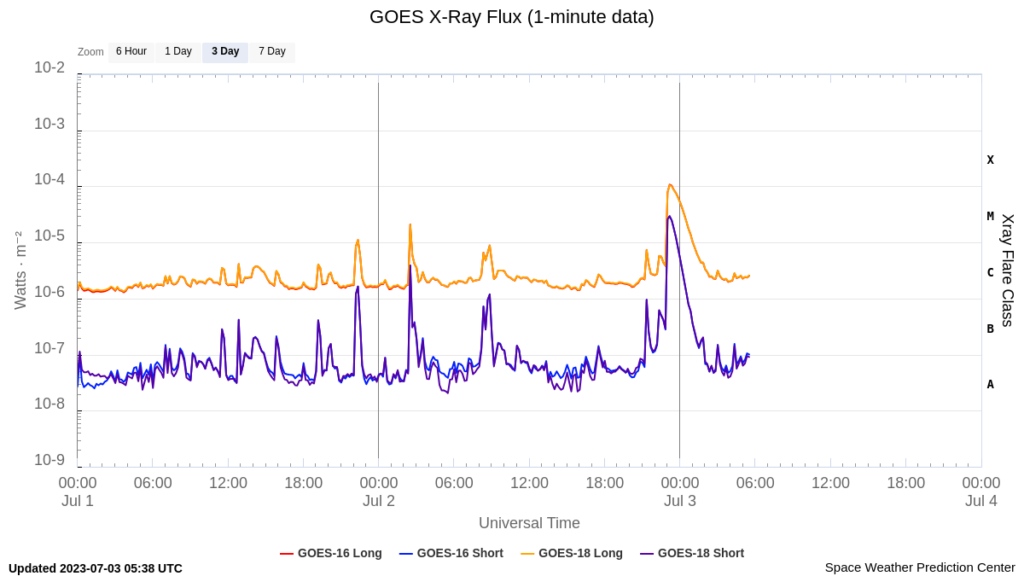
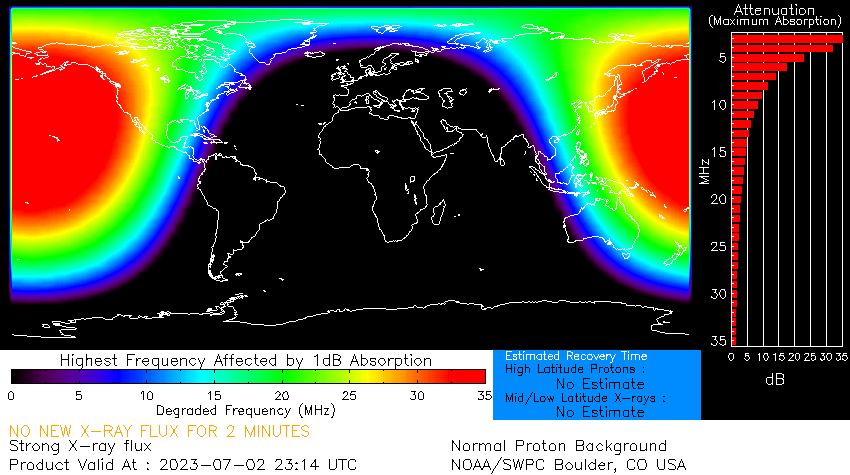
“The genesis of this flare is interesting and possibly unusual,” Dr. Tony Phillips of SpaceWeather.com said. “The sunspot didn’t explode on its own. It got help from a plume of plasma curling over the Sun’s limb. Hot magnetized gas landing on the sunspot triggered the blast.”
At 02:35 UTC on July 2, Active Region 3359 produced an M2.0 solar flare. Accompanying this flare were multiple discreet frequency radio bursts, a Type II radio sweep (379 km/s), and a CME off the SE limb. The CME is not expected to be geoeffective.
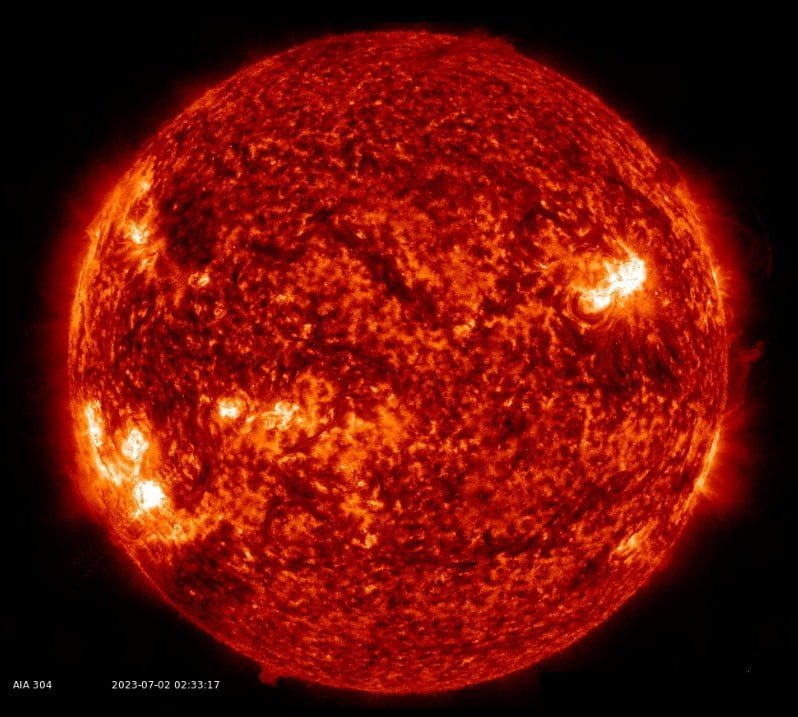

Solar activity is likely to reach moderate (R1-R2/Minor-Moderate) levels from July 3 to 5 and there’s a slight chance for X-class flares (R3/Strong), according to the SWPC.
The greater than 2 MeV electron flux reached high levels in 24 hours to 00:30 UTC today, with a peak flux of 2 200 pfu at 19:25 UTC. The greater than 10 MeV proton flux was at background levels during the period.
The greater than 2 MeV electron flux is expected to reach high levels over the next 3 days and there is a slight chance for a greater than 10 MeV proton event exceeding the S1-Minor threshold due to the flare potential of Region 3354.
Solar wind parameters were slightly enhanced over the past 24 hours, with solar wind speeds mostly between ~400 and 465 km/s. The total field ranged from 5 – 6 nT while the Bz component was between +3/ – 4 nT. Phi angle was mostly positive.
Solar wind parameters are expected to continue to trend toward nominal levels through July 3, followed by weak negative polarity coronal hole high speed stream (CH HSS) effects on July 4 and 5.
The geomagnetic field was quiet level over the past 24 hours and mostly quiet conditions are expected to last through the rest of the UTC day.
Quiet to unsettled levels are expected on July 4 and 5 due to weak CH HSS effects.
Featured image: X1.0 solar flare on July 2, 2023. Credit: NASA/SDO AIA304, Helioviewer, The Watchers


Commenting rules and guidelines
We value the thoughts and opinions of our readers and welcome healthy discussions on our website. In order to maintain a respectful and positive community, we ask that all commenters follow these rules.